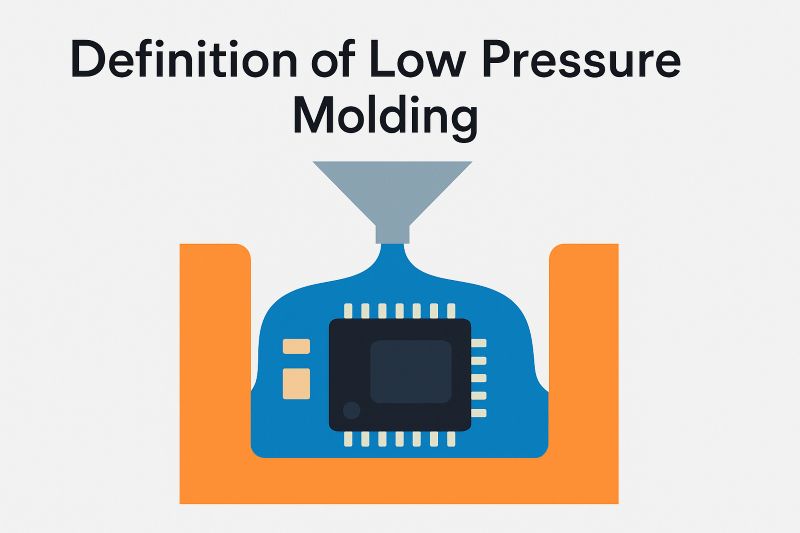
Definition of Low Pressure Molding
Types of Molding Materials
Importance of Low Pressure Molding
Molding Techniques and Methods
Latest Trends in Molding Materials
Strategies for Effective Molding
Future of Low Pressure Molding
Low pressure molding is a manufacturing process that uses thermoplastic materials with low viscosity to gently encapsulate electronic components. This method provides physical and environmental protection—such as resistance to moisture, vibration, and dust—without stressing delicate circuitry. It is widely used for protecting sensors, switches, connectors, and microelectronics in various industrial and consumer applications.
The most commonly used materials for low pressure molding are polyamide-based and polyolefin-based thermoplastics.
Polyamide materials offer high adhesion strength and excellent chemical and thermal resistance.
Polyolefin materials are valued for their flexibility, cost-effectiveness, and moderate environmental resistance.
These materials are chosen based on the component's application, environmental exposure, and mechanical stress requirements.
Low pressure molding plays a vital role in safeguarding compact and sensitive electronics. Unlike traditional potting methods, this technique minimizes the risk of damage during encapsulation. It also allows for faster cycle times, reduced material waste, and cleaner application. In industries requiring reliability—such as automotive electronics, industrial controls, and medical sensors—this process ensures improved durability and operational stability.
Two of the most common methods in low pressure molding are:
Overmolding: A process in which a second layer of thermoplastic is applied over an existing substrate, offering enhanced mechanical and environmental protection.
Potting by low pressure injection: Fills molds with thermoplastics to create a complete protective shell around a component.
Both methods rely on precision temperature control, mold design, and flow analysis to ensure that materials are distributed evenly without air entrapment or structural stress.
Material technology for low pressure molding continues to advance in several key directions:
Biobased and sustainable thermoplastics for greener production.
Improved thermal cycling resistance, essential for automotive and outdoor electronics.
Custom formulations tailored for specific bonding surfaces like PCBs, flex circuits, or connectors.
These trends reflect growing demand for performance, sustainability, and material traceability in global electronics manufacturing.
To maximize molding efficiency and reliability:
Select the right material based on operating conditions (e.g., moisture, temperature, vibration).
Optimize mold design to support clean flow paths and proper air release.
Maintain process control for injection temperature, pressure, and cycle time.
Train operators and technicians in setup, troubleshooting, and inspection protocols.
When implemented correctly, these strategies minimize failure rates, enhance product quality, and reduce overall production costs.
The future of low pressure molding is driven by the miniaturization of electronic devices and the growing need for robust protection in harsh environments. We can expect:
Smarter materials with self-healing or sensing capabilities.
Faster cycle times through improved equipment design and thermal efficiency.
Wider adoption in sectors like renewable energy, wearables, and autonomous systems.
As product designs evolve, low pressure molding will continue to provide flexible and scalable protection solutions across industries.